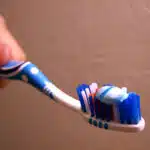As an automotive upholstery specialist, I have encountered numerous customers who struggle with keeping their cloth car seats clean. Many drivers are unaware of the proper cleaning techniques required to maintain the appearance and functionality of their vehicle’s interior. Neglecting to clean cloth car seats can lead to unpleasant odors, stains, and even permanent damage to the fabric.
In this article, we will discuss the most effective methods for cleaning cloth car seats. Whether you are dealing with spills, stains, or just general dirt buildup on your seats, following these steps will help keep your upholstery looking fresh and new. As a service-oriented audience with a desire to serve others, it is important to prioritize the upkeep of our vehicles and ensure that they are not only functioning optimally but visually appealing as well. Let’s dive into the world of cloth car seat cleaning and discover how we can maintain our cars’ interiors in top-notch condition.
Understanding The Importance Of Proper Car Seat Maintenance
Maintaining the hygiene of car seats is essential for car owners. The importance of car seat hygiene cannot be overstated, as it not only ensures a comfortable ride but also helps prevent the spread of germs and bacteria. As we spend a considerable amount of time in our cars, it is crucial to keep the seats clean to avoid any health hazards.
Tips for preventing wear and tear on car seats go hand-in-hand with maintaining hygiene. Simple steps such as vacuuming regularly and wiping down spills immediately can go a long way in preserving the condition of your car seats. Additionally, using seat covers or protective sprays can provide an extra layer of protection from stains and spills.
As an automotive upholstery specialist, I highly recommend investing time in proper car seat maintenance. Neglecting this aspect can lead to permanent damage to your car’s interior, requiring costly repairs or replacements. By following simple tips for maintaining hygiene and preventing wear and tear on your car seats, you can ensure an enjoyable ride for yourself and your passengers.
To identify common types of stains and messes that occur on cloth car seats, it is important to understand their sources and how they affect the fabric.
Identifying Common Types Of Stains And Messes
As an automotive upholstery specialist, it’s important to know the common causes of car seat stains in order to effectively remove them. The most frequent culprits are food and beverage spills, grease from tools or machinery, ink from pens or markers, and dirt and mud tracked in from shoes. Each type of stain requires a different cleaning approach.
For food and beverage spills, it’s important to act quickly before the stain sets in. Blot up any excess liquid with a clean cloth or paper towel. Then mix a solution of warm water and mild detergent, such as dish soap, and apply it to the stain using a clean cloth. Blot the area again with a dry cloth until the stain is removed.
Grease stains can be more challenging to remove because they tend to spread when rubbed. The best approach is to sprinkle cornstarch or baking soda over the affected area and let it sit for at least 30 minutes. This will help absorb the grease. Vacuum up the powder and then apply a solvent-based cleaner specifically designed for removing grease stains.
Ink stains require quick action as well since they can set quickly. First blot up any excess ink with a clean cloth or paper towel. Then apply rubbing alcohol or hairspray directly onto the stain using a cotton ball or swab. Blot with a clean cloth until the stain is removed. Dirt and mud stains can be removed by vacuuming up any loose debris followed by applying a mixture of warm water and laundry detergent onto the affected area.
Knowing these effective stain removal techniques will help you keep your car seats looking their best for years to come. In our next section, we’ll discuss gathering the necessary cleaning supplies for tackling tough car seat stains head on.
Gathering The Necessary Cleaning Supplies
When it comes to cleaning cloth car seats, preparation is key. As an automotive upholstery specialist, I cannot stress enough the importance of selecting appropriate cleaners that will effectively remove stains and dirt without causing any damage to the upholstery. Before starting the cleaning process, gather the necessary supplies to ensure a successful outcome.
Firstly, choose a cleaner specifically designed for car upholstery. Avoid using household cleaners as they may contain chemicals that are too harsh for fabric material. Secondly, select a soft-bristled brush or sponge for gentle scrubbing, and microfiber towels for wiping away excess moisture. Lastly, consider investing in a portable steam cleaner as it can effectively penetrate deep into the fabric to remove tough stains.
It’s important to note that not all cloth car seats are created equal. Some materials may be more delicate than others and require special care when cleaning. Always read the manufacturer’s instructions before applying any cleaner or solution onto the upholstery. Additionally, avoid using excessive water or scrubbing too hard as this can cause damage such as discoloration or fraying of the fabric.
By following these guidelines and carefully selecting appropriate cleaners, you can clean your cloth car seats effectively without causing any damage to the upholstery. In the subsequent section, we will discuss vacuuming the seats to remove loose dirt and debris before proceeding with further cleaning measures.
Vacuuming The Seats To Remove Loose Dirt And Debris
To start with, it is important to prepare your vacuum cleaner for upholstery maintenance. This involves ensuring that the attachments are clean and free of debris, as well as checking that there are no cracks or tears in the hose or nozzle. Additionally, make sure that the vacuum cleaner has good suction power and that the filter is clean. Once you have checked these things, you can begin vacuuming your cloth car seats.
There are several vacuuming techniques that can be used to remove loose dirt and debris from car seats. The first technique involves using a crevice tool to reach tight spaces between the seat cushions and along the edges of the seats. Another technique is to use a brush attachment to gently loosen any dirt or debris on the surface of the seats before vacuuming it up. Finally, some people find that using a pet hair attachment or rubber bristle brush can be effective at removing stubborn dirt and pet hair from cloth car seats.
By regularly vacuuming your cloth car seats as part of your upholstery maintenance routine, you can prevent dirt and debris from building up over time. This not only helps keep your car looking clean and fresh but also helps extend the lifespan of your car’s interior. In order to stay on top of this task, consider setting a regular schedule for cleaning your car’s upholstery, such as once a week or every other week depending on how frequently you use your vehicle.
As you finish up with this step in maintaining your cloth car seats, it is important to note that sometimes simple dry vacuuming may not be enough for stains or tougher marks on your seats. If this is the case, it may be necessary to move onto pre-treating stains with a cleaning solution in order to get them out effectively.
Pre-Treating Stains With A Cleaning Solution
After vacuuming the car seats, it’s time to pre-treat any stains before cleaning the entire seat. This step is crucial to ensure that all stains are removed effectively without damaging the fabric of the car seat. Choosing effective solutions is important in this step. It’s important to choose a cleaning solution that is specifically made for car seats and not just any household cleaner.
Applying the solution correctly is also essential in this step. Before applying the solution, test it on a small, inconspicuous area of the seat to make sure it doesn’t cause discoloration or damage to the fabric. Once you’re sure that it’s safe to use, apply it directly onto the stain and let it sit for a few minutes. Don’t let it dry out completely as this may make the stain harder to remove.
After letting the solution sit for a few minutes, use a clean cloth to blot away any excess liquid and dirt from the stain. Avoid rubbing or scrubbing too hard on the fabric as this may damage it further. Repeat this process until you see that most of the stain has been lifted from the surface of your car seats. With these steps, you can be sure that your car seats will look good as new after they’ve been cleaned thoroughly.
Next up is scrubbing stains with a soft-bristled brush.
Scrubbing Stains With A Soft-Bristled Brush
Gentle scrubbing is a crucial step in removing stains from cloth car seats. By using a soft-bristled brush, you can effectively remove stubborn stains without damaging the fabric. It is important to avoid using hard-bristled brushes or abrasive materials as they can cause scratches and tears on the surface of the seat.
When selecting an effective cleaning solution for your cloth car seat, ensure that it is safe for use on upholstery fabrics. Avoid using bleach or harsh chemicals as they can strip away the color and weaken the fibers of the material. A mixture of warm water and mild detergent can be used to gently scrub away dirt and stains from your car seats.
By incorporating gentle scrubbing techniques and utilizing effective cleaning solutions, you can successfully remove stains from your cloth car seats without causing any damage or discoloration. However, for deeper cleaning, using a steam cleaner may be necessary.
Using A Steam Cleaner For Deep Cleaning
Scrubbing stains with a soft-bristled brush can be effective for removing surface dirt and grime from cloth car seats. However, for a more thorough cleaning process, using a steam cleaner is highly recommended. Steam cleaners have become increasingly popular in recent years due to their efficiency and effectiveness in deep cleaning various surfaces, including automotive upholstery.
One of the benefits of steam cleaning is that it uses hot vapor to penetrate deep into the fibers of the fabric, effectively loosening and lifting dirt, stains, and bacteria. Additionally, steam cleaning does not require any harsh chemicals or solvents, making it an eco-friendly option for those who prioritize sustainability. When choosing the right steam cleaner for your cloth car seats, there are several factors to consider such as size, power output, and attachments.
It’s important to note that after using a steam cleaner on your cloth car seats, you should rinse them thoroughly with clean water to remove any remaining dirt or cleaning solution. Once rinsed, allow the seats to air dry completely before using your vehicle again. Rinsing and drying the seats ensures that no residue is left behind that could potentially damage or discolor the fabric over time.
Rinsing And Drying The Seats
After thoroughly scrubbing the car seats with a cleaning solution, it is important to rinse the seats to remove any remaining soap and dirt. Rinsing can be done with water in a spray bottle or a damp cloth. It is important to avoid using too much water as this could lead to mold growth and mildew smells in the car.
When drying the car seats, it is necessary to use a dry towel or cloth to absorb as much moisture as possible. This process should be repeated until no more water can be absorbed. The next step is to allow the seats to air dry completely. If possible, park your car in an area that receives good sunlight and leave the windows open for maximum ventilation.
To speed up the drying process, you can use a fan or a hair dryer on its cool setting while keeping it at least one foot away from the seat surface. However, take caution not to overheat or burn the fabric with hot air blowing directly onto it. Ensure that all areas of the seat are dried before placing any cushions or covers back into place.
As we have seen, rinsing techniques and drying methods are key steps in cleaning cloth car seats effectively. By following these simple steps, you can ensure that your car’s interior remains clean and fresh for longer periods of time. Next up in our guide, we will look at how baking soda can help remove lingering odors from your car’s upholstery without causing any damage to the fabric.
Removing Lingering Odors With Baking Soda
After cleaning cloth car seats, lingering odors can still remain. Fortunately, there are effective ways to eliminate these unwanted smells without resorting to harsh chemicals. Baking soda is a natural odor neutralizer that can effectively absorb unpleasant smells from car upholstery.
To use baking soda as an odor eliminator, simply sprinkle it onto the cloth car seats and let it sit for several hours. Then, vacuum up the baking soda using a handheld vacuum or a regular vacuum with a hose attachment. This process should remove any remaining odors and leave your car smelling fresh and clean.
If you prefer not to use baking soda, there are other alternatives available. DIY odor neutralizing sprays can be made using simple ingredients like vinegar and essential oils. These sprays can be sprayed directly onto the cloth car seats and should help eliminate odors over time.
In addition to using baking soda or DIY sprays, you may also consider investing in protective covers for your car seats. These covers can help prevent future stains and spills from penetrating into the fabric of your car seats, which will reduce the likelihood of lingering odors developing over time. With these options available, keeping your cloth car seats clean and fresh-smelling is easier than ever before. In the next section, we will discuss how to prevent future stains with protective covers.
Preventing Future Stains With Protective Covers
There are several types of protective covers for car upholstery available, including cloth, vinyl, leather, and plastic.
These covers can provide a barrier between the car seat and the general public, protecting from spills and dirt.
Installing protective covers can reduce cleaning time and effort, while also extending the life of the car seat.
Furthermore, protective covers are available in a variety of colors and patterns to enhance the aesthetics of the car interior.
Types Of Covers
As an automotive upholstery specialist, I have seen countless car seats that are stained and worn out due to everyday wear and tear. One of the best ways to prevent future stains on your cloth car seats is by using protective covers. There are various car seat cover options available in the market, but choosing the right fabric is crucial.
When it comes to selecting the right fabric for your car seat covers, there are a few things to consider. Firstly, you need to think about the type of protection you want from your covers. If you’re looking for waterproof covers, vinyl or neoprene materials would be ideal. However, if you prefer a more breathable fabric that’s easy to clean and maintain, polyester or cotton blends could work well.
Another factor to consider is durability. If you have children or pets that frequently ride in your car, then high-quality fabrics like leather or microfiber would be a good choice as they can withstand heavy use and spills. In addition, some fabrics may not work well with certain types of cleaning products or methods, so it’s essential to do your research before making a purchase.
In conclusion, choosing the right fabric for your car seat covers is vital in preventing future stains on your cloth car seats. With various options available in terms of material and design, it’s important to weigh up factors such as protection level and durability before making a final decision. So take the time to research different options and invest in quality protective covers that will keep your car seats looking new for years to come.
Benefits Of Covers
Protective covers are an essential investment in maintaining the condition of your car seats. In addition to preventing future stains, covers can provide multiple benefits that enhance the overall appearance and comfort of your vehicle’s interior. One significant benefit of using protective covers is their ability to protect your original upholstery from fading caused by exposure to sunlight. Covers also help to prevent scratches and tears on your seats, which can be unsightly and costly to repair.
When it comes to selecting the right material for your car seat covers, there are various types available that offer different benefits. For instance, if you’re looking for a breathable fabric that provides comfort during long rides, cotton blends or polyester materials could be an ideal choice. On the other hand, if you want water-resistant covers that are easy to clean after spills or accidents, vinyl or neoprene materials would be more suitable.
Another advantage of using protective covers is their versatility in customization. You can choose from different designs and colors that complement your car’s interior while still providing protection against future stains. Moreover, covers are easy to remove and washable, making them a practical option for regular maintenance of your car seats’ cleanliness.
In conclusion, investing in protective covers not only prevents future stains but also offers numerous benefits such as UV protection, scratch prevention, and customization options. With various materials available in the market today with different advantages based on one’s needs, choosing the right cover is essential in maintaining the longevity of your car seats’ quality while keeping it looking new for years to come.
Dealing With Stubborn Or Set-In Stains
Removing stains from cloth car seats can be a daunting task, especially if they are stubborn or set-in. However, with the right tools and techniques, you can effectively remove even the toughest of stains. The key is to act quickly and avoid using harsh chemicals that could damage your upholstery.
One effective method for removing stains from cloth car seats is to use a combination of vinegar and baking soda. Start by mixing equal parts white vinegar and water in a spray bottle. Spray the stained area generously and then sprinkle baking soda on top. Allow the mixture to sit for several minutes before scrubbing gently with a soft-bristled brush. Finally, wipe away the residue with a clean, damp cloth.
In addition to removing stains, it’s important to protect your upholstery from future spills and accidents. Consider applying an upholstery protection product that will help repel liquids and prevent stains from setting in. Be sure to follow the manufacturer’s instructions carefully when applying these products, as some may require multiple coats or a specific drying time before use.
| Stain Type | Recommended Cleaning Solution | Additional Tips |
|---|---|---|
| Coffee/Tea | Vinegar solution (1 part vinegar, 2 parts water) | Blot stain immediately; avoid rubbing |
| Grease/Oil | Cornstarch or baking soda; dish soap if necessary | Apply powder directly to stain; allow time to absorb oil/grease |
| Ink | Rubbing alcohol or hairspray | Test cleaning solution on inconspicuous area first |
| Blood | Cold water + dish soap; hydrogen peroxide if necessary | Use cold water only; avoid hot water which can set stain |
When dealing with stubborn or set-in stains on cloth car seats, it’s important to remain patient and persistent. Avoid using harsh chemicals that could cause damage to your upholstery, and instead opt for natural cleaning solutions like vinegar and baking soda. In addition, consider applying an upholstery protection product to prevent future stains from setting in. In the next section, we’ll discuss common cleaning mistakes to avoid when cleaning your cloth car seats.
Avoiding Common Cleaning Mistakes
Dealing with stubborn or set-in stains on cloth car seats can be a challenge, but there are effective techniques that can be used to remove them. However, it is important to avoid common cleaning mistakes that can damage the upholstery. Prevention is key when it comes to maintaining the cleanliness of your car seats.
To avoid common cleaning mistakes and ensure safe and effective cleaning techniques, there are a few tips to keep in mind. First, always read the manufacturer’s instructions before using any cleaning product on your car seats. Using the wrong type of cleaner or method can cause discoloration or damage to the fabric. Additionally, use caution when using harsh chemicals such as bleach or ammonia, as these can also damage the upholstery. It is recommended to test any new cleaner on an inconspicuous area of the seat before using it on a larger stain.
Another helpful tip for safe and effective cleaning is to use a soft-bristled brush or cloth instead of abrasive materials like steel wool or rough sponges. These materials can scratch and damage the fabric, leading to further problems down the road. By following these tips and being mindful of common cleaning mistakes, you can maintain clean and pristine car seats for years to come.
When all else fails, it may be time to consider hiring a professional upholstery cleaner. These specialists have access to specialized equipment and cleaners that can effectively remove even the toughest stains without causing damage to your car’s interior. While this option may require an investment, it is often worth it in terms of both saving time and preserving the value of your vehicle over time.
Hiring A Professional Upholstery Cleaner
While cleaning your own car seats may seem like an easy and cost-effective option, it is important to consider the benefits of hiring a professional upholstery cleaner. One common objection to hiring a professional is the cost. However, it is important to evaluate the long-term cost effectiveness of this decision. By investing in a professional cleaning, you can extend the lifespan of your car seats and prevent expensive replacements in the future.
Here are four reasons why hiring a professional upholstery cleaner can be beneficial:
- They have access to specialized equipment and products that can effectively remove tough stains and dirt.
- Professionals are trained to identify different types of fabrics and know how to properly clean each one without causing damage.
- They can also provide additional services such as odor removal and applying protective coatings for future prevention of stains.
- Hiring a professional saves you time and effort, allowing you to focus on other important tasks while leaving the cleaning to the experts.
Overall, investing in a professional upholstery cleaner may seem like an extra expense at first glance, but it can ultimately save you money in the long run by extending the lifespan of your car seats. Additionally, by leaving this task to professionals, you can ensure that your car seats receive a thorough cleaning without any risk of damage. In order to maintain cleanliness on a regular basis, there are simple actions that you can take at home between cleanings which we will discuss in the next section.
Maintaining Cleanliness On A Regular Basis
After hiring a professional upholstery cleaner, it is important to maintain the cleanliness of your cloth car seats on a regular basis. Regular maintenance helps in keeping dirt and grime from setting into the fabric, making cleaning easier and more effective. Simple preventive measures can also help in prolonging the lifespan of your car seats.
One way to maintain the cleanliness of your cloth car seats is to vacuum them regularly. This removes loose dirt and debris that may have accumulated on the surface of the fabric. You can use a handheld vacuum or an attachment on your regular vacuum cleaner for this purpose. Vacuuming should be done at least twice a month, or more frequently if you often transport pets or children in your car.
Another preventive measure that you can take is to use seat covers. Seat covers protect the original fabric from spills and stains, as well as wear and tear. They are available in different materials such as leather, neoprene, and polyester, depending on your preference and budget. Regular cleaning of seat covers is also recommended to prevent them from becoming breeding grounds for bacteria and mold.
By following these simple tips for regular maintenance and preventive measures for your cloth car seats, you can enjoy a fresh and comfortable ride every time you get behind the wheel. Remember, prevention is always better than cure when it comes to maintaining the cleanliness of your car’s interior upholstery.
Enjoying A Fresh And Comfortable Ride
As an automotive upholstery specialist, I have witnessed firsthand the benefits of regular cleaning of cloth car seats. Not only does it enhance the overall appearance of the car’s interior, but also prolongs the lifespan of the seats. Dirt and grime can easily accumulate on cloth seats, causing discoloration and unpleasant odors. Regular cleaning eliminates these issues, leaving your car smelling fresh and comfortable.
To maintain freshness in your car, consider using natural odor eliminators such as baking soda or essential oils. These options are effective in eliminating unpleasant smells without introducing harmful chemicals into your car’s environment. Additionally, avoid eating and drinking in your car to prevent spills and stains on your cloth seats. In case of accidental spills, promptly clean them up to avoid permanent staining.
If you want to take extra steps in maintaining a fresh and comfortable ride, consider investing in seat covers or protective sprays that repel water and stains. These products not only protect your cloth seats from damage but also make cleaning easier as they prevent spills from penetrating deep into the fabric fibers. With proper maintenance and care for your cloth seats, you can ensure a comfortable ride for yourself and passengers while preserving the value of your vehicle.
Conclusion
Proper car seat maintenance is essential for a comfortable and hygienic driving experience. Identifying common types of stains and messes is the first step in maintaining your cloth car seats. Gathering the necessary cleaning supplies, including a vacuum cleaner and appropriate cleaning solution, will help you get started.
Vacuuming the seats to remove loose dirt and debris is crucial before pre-treating stains with a cleaning solution. Avoiding common cleaning mistakes such as using harsh chemicals or scrubbing too aggressively can prevent damage to your upholstery. In case of stubborn stains or excessive mess, hiring a professional upholstery cleaner may be necessary.
To maintain cleanliness on a regular basis, make sure to wipe down spills immediately and vacuum regularly. A fresh and comfortable ride is not only enjoyable but also contributes to good hygiene practices. Upholstery specialists recommend avoiding eating inside your car and removing garbage regularly.
In conclusion, maintaining clean cloth car seats requires attention to detail and regular cleaning habits. By identifying common stains, gathering the right supplies, pre-treating stains carefully, avoiding common mistakes, hiring professionals when necessary, and maintaining cleanliness on a regular basis will ensure that your car seats remain fresh and comfortable for years to come. Remember that proper car seat maintenance is an investment in your health, comfort, and overall driving experience!
Image Credits
- “Tuning – Seat Leon Cesam / Remus clothing” by WillVision Photography (featured)





























